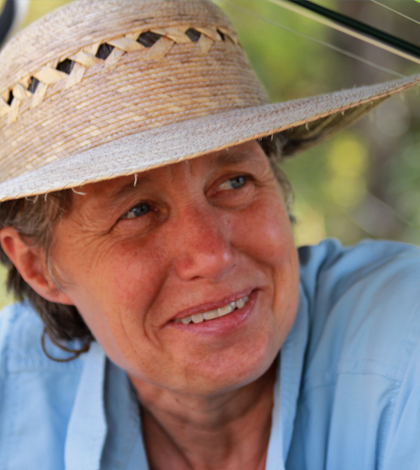Q&A With Kathleen Weathers: GLEON Co-Chair Talks On Network’s 10th Year

Kathleen Weathers. (Credit: M.L. Ferraro)
Kathleen Weathers, a biogeochemist with the Cary Institute of Ecosystem Studies and co-chair of the Global Lakes Ecological Observatory Network, got involved with GLEON on the ground floor. She was working with the Lake Sunapee Protective Association when she learned about GLEON in 2005 from co-founder Tim Kratz. She helped find funding for a buoy on the lake and registered the LSPA as the first GLEON site. She answered a few questions on the occasion of GLEON’s tenth anniversary.
Environmental Monitor: In a few sentences, how would you describe GLEON to someone who hadn’t heard of it?
Kathleen Weathers: GLEON is an ever-growing group of scientists and citizen scientists who are passionate about understanding how lakes and reservoirs “work” and how they respond to change. GLEONites are enthusiastic about working collaboratively across cultures, career stages and different perspectives. Importantly, GLEON is grassroots. It is a network of people first and foremost, who are united by a mission to carry out networked lake science, education, and outreach through a process that encourages diverse leadership and initiative.
EM: How does being a grassroots effort benefit GLEON compared to top-down observing networks?
KW: Everyone who is involved in GLEON is engaged because they wish to be, which turns out to be a very powerful motivator for doing — and platform from which to do — innovative science, outreach, as well as for developing technologies and models. We have taken great care to structure GLEON to empower people to take leadership, to grow within the network, and to embrace diversity of all kinds — to collaborate with integrity. Ideas, data and personal connections are what power the network and its products.
EM: What issues are you navigating as co-chair of the steering committee?
KW: First, GLEON has achieved successes beyond our (the whole GLEON community, I believe) wildest dreams. One of the biggest challenges is to retain the nimble, dynamic and personal nature of the network as we grow. In 10 years, we are more than 500-members strong, and our all-hands meeting size has grown from 20-30 to almost 200. The second is how to maintain financial support for face-to-face meetings that are crucial to carrying out truly innovative science and generating new ideas and initiatives. This funding is some of the hardest to obtain, and underpins our success. It also is what allows us to support participation of early career scientists and colleagues (whether citizens or scientists) from developing countries. The third is the issue of accessing and supporting tools and technologies — the cyberinfrastructure — for data exploration, visualization and sharing that is at the core of GLEON collaborations. Data and information are at the core of GLEON, yet we lack the cyberinfrastructure to readily, easily share data around the world, or visualize those data. Finally, how do we position GLEON (GLEON’s people, data, and lake networks) as the go-to place for knowledge, information, innovation, and leadership about lakes and reservoirs?
EM: Lake Sunapee was one of the sites in a multi-lake study showing the effects of Irene across North American lakes. Can you describe what that study found and how a single-lake study would have missed that result?
KW: Not all lakes and reservoirs respond to and recover from major disturbances similarly. Major storms such as hurricane Irene, which are predicted to increase in the future, had huge legacy effects on some systems (such as the Ashokan Reservoir, Catskill Mountains, NY), that were not nearly as evident in Lake Sunapee. Lakes with large watersheds located far from the storm’s path were more affected than lakes with small watersheds located close to the storm’s path.
EM: What excites you about the future of lake observation?
KW: The ability to visualize, hear, and predict how lakes breath and function, 24/7 365 days a year, using new tools and technologies — and to compare lakes around the world (locally based, globally relevant) is truly exciting. And, to use that information as a common language — to display and interact with the data in real time and in ways that resonate and inspire us, collectively (citizens and scientists together), to make management decisions, or create art, music, or new policy offers a remarkable opportunity.
Top image: Kathleen Weathers. (Credit: M.L. Ferraro)




0 comments